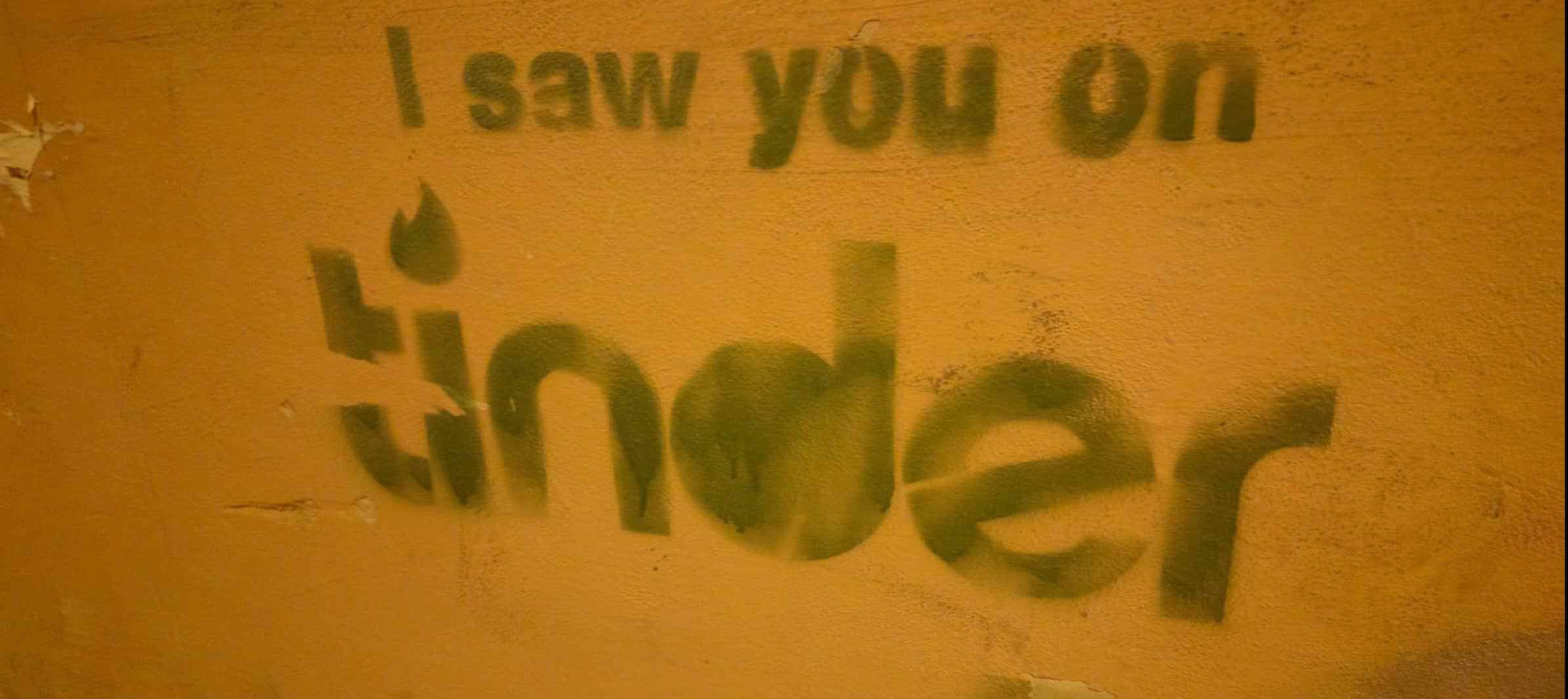Dating Is Now The Epitome Of The Collision Between Digital And Physical
I have reached a point in my life where going to the bar no longer holds the same luster.
I grew up in restaurants and pubs. I started working in kitchens when I was 14. I retired, after rising to the level of chef, close to my 26th birthday. Bars, restaurants, clubs, parties … this is where I learned how to socialize.
It wasn’t a healthy existence, which is why I got out of the culinary industry entirely.
Outside of the familiarity of habit, going to bars used to be the number one way I met women. There is a notion of surface area to this method: the more time you spend out and about, the higher the chance you will run into somebody you might like. I used to find myself sitting at the pub on a weekday at 10 p.m. just to be out and about.
To be honest, some of the loneliest times in my life have been spent sitting at crowded bars, surrounded by people. It took me longer than I care to admit to break this habit.
Now in my mid-30s, how do I spend my Friday nights? Perusing dating apps and playing Overwatch. Somehow I feel like I am missing the happy medium.
Dating Apps And My History Of Forced Humility
I started writing annual updates to this column around Valentine’s Day in 2013. The original premise: I was going to take my entire dating life mobile. I wouldn’t use desktop websites, I wouldn’t actively attempt to meet women in bars. I would only use apps.
At the time, the idea was original and a bit absurd. And … it didn’t go well. Since that time, I have been in two relationships for what amounts to almost three years.
And I didn’t meet either of them through apps.
The first (and longest) relationship started at a coffee shop. Yes, I dated my barista. Hell, she even moved in before leaving to pursue school in a state far, far away.
The second? I met her at … at a bar.
It was at a friend’s birthday party.
In between, I have spent a lot of time in dating apps. I have been casually perusing online dating sites since about 2005. And what do I have to show for it?
Not one single meaningful relationship. Like, ever. You can consult previous entries in this series to see how this goes, but the typical interaction on a dating app goes something like …
- Peruse pictures, read short bios.
- Swipe left, left, left, left, right, right, left, left, right, left, right.
- Swipe right on the match you really like.
- Never get matched with that person.
- Get matched with the person you either casually or begrudgingly swiped right on.
- Send a message to that person.
- Never hear back.
- OR, hear from that person immediately. Start a witty dialogue.
- Dialogue peters out somewhere between three and 20 messages.
- Never hear from that person again.
- On rare occasions, that person asks you out or you ask that person out. A meeting is agreed upon.
- Several messages exchanged on details of said meeting. At this point you exchange phone numbers so as not to text on the dating app anymore.
- Go on one or two dates that are often fun with casual banter, storytelling and cocktails. You think things are going well.
- Never hear from that person again.
I’d like to say that this is abnormal. But it is not. This has been my exact experience dozens of times and it almost always plays out in the same process. It is uncanny. One of ways I have circumvented the messaging problem with dating apps is to use Bumble, an app started by one of the cofounders of Tinder, which requires women to message first. If two people match, the woman has 24 hours to send a message or the match will disappear. I have found that this is a much better way to start a conversation to know that the potential match is actually interested.
From Experimental To The New Normal
Online dating has been around about as long as the Web. The practice started to pick up in the early 2000s when the notion of online dating profiles started appearing in movies and television as this sort of weird, potentially dangerous, desperate distraction. Dating apps made the natural transition to smartphones through the likes of Tinder and OKCupid, Coffee Meets Bagel, Hinge, Grindr and Bumble.
Telling people you met online used to somewhat of a taboo. Couples founded in the digital realm used to make up stories about how they met so they could escape the embarrassment of saying they met over the Internet.
That’s all over and done with.
According to Statistic Brain Research Institute, there are 54.25 million single people in the United States. And 49.25 million of those single people have used dating sites or apps. The annual revenue of the online dating industry is $1.749 billion. The total percentage of marriages from July 2015 to July 2016 that met online was 17% and 20% of current relationships met over the Internet.
According to Pew Research, four in 10 Americans know a couple that met online. People also now view online dating in a positive light: Pew reports:
For the most part, people today view online dating positively. About six-in-ten (59%) say that it is a good way to meet people, and 47% agree that it is easier and more efficient than other ways of meeting people. Detractors remain, however – 23% say that people who use online dating sites are desperate.
Our theme for February 2017 has been the disruption caused by digital-to-physical convergence. We’ve seen it come with the Internet of Things and how retailers go about their business. Interpersonal human relationships are no different. Nowhere is the digital/physical convergence better personified than in how computers have affected how people meet. Dating apps are the new normal.




